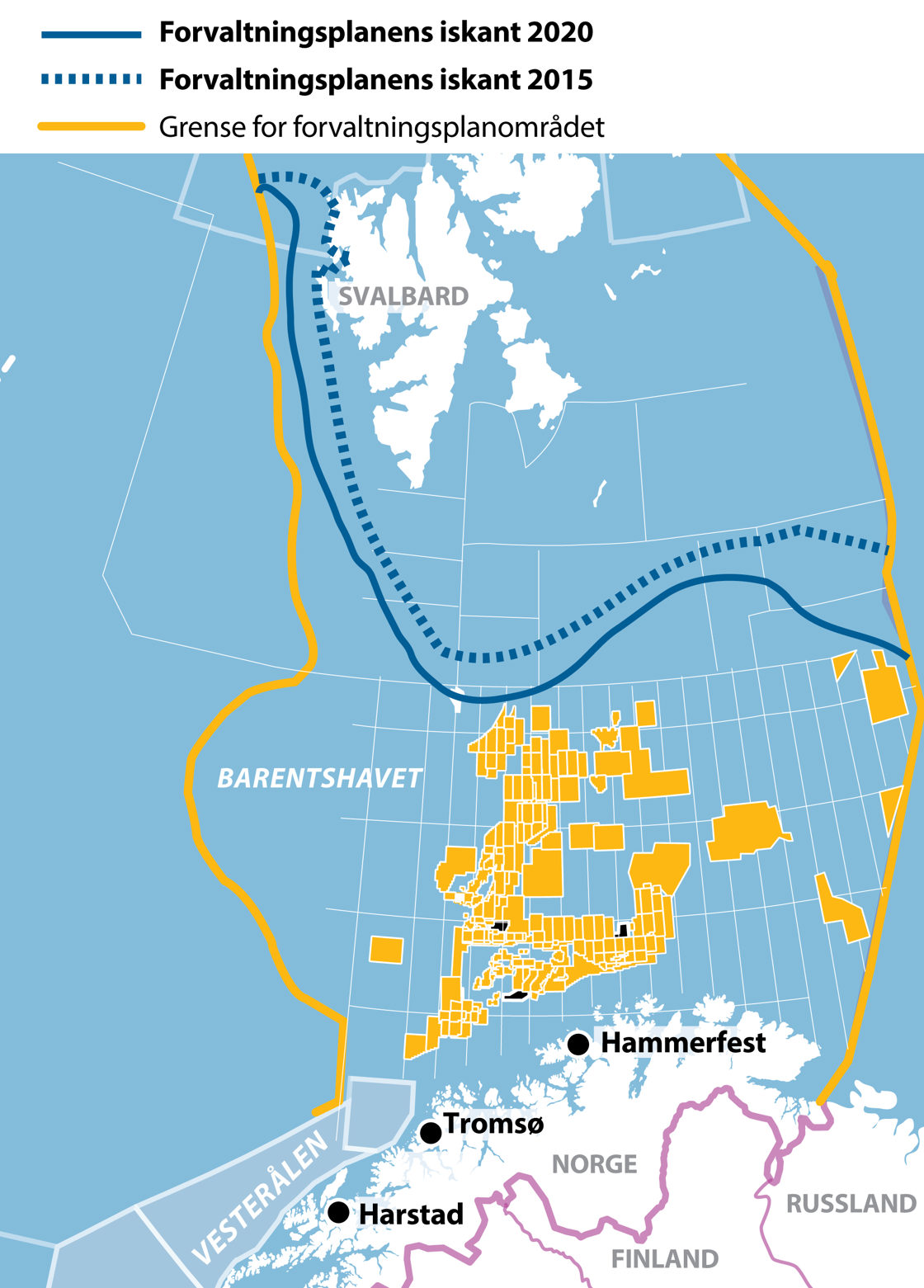Norway presents revised marine management plans
Historical archive
Published under: Solberg's Government
Publisher: Ministry of Climate and Environment
News story | Date: 24/04/2020
Today, the Government presented its revised management plans for Norway’s sea areas – the Barents Sea–Lofoten area, the Norwegian Sea and the North Sea and Skagerrak. One management measure that is being introduced is a shift of the boundary for oil and gas activities in the Barents Sea south to the line where ice is found on average on 15 % of the days in April.
The purpose of the management plans for the Barents Sea–Lofoten area, the Norwegian Sea and the North Sea and Skagerrak is to provide a framework for value creation through sustainable use while maintaining the high environmental value of Norway’s marine areas.
‘We will make use of our marine resources and at the same time take steps to protect the environment. The management plans we are presenting today are designed to safeguard the environment while also providing a framework for fisheries, shipping, petroleum activities and other important industries. The plans provide a basis for integrated marine management and for maintaining a sustainable ocean economy,’ said Prime Minister Erna Solberg.
In the Barents Sea, climate change has resulted in a long-term trend of rising sea temperatures, shrinking ice cover and large-scale ecological changes, especially in the northernmost areas.
‘The northern part of the Barents Sea is the richest and biologically most productive ocean area in the Arctic. Climate change is making the marginal ice zone and the species that live there more vulnerable to external pressures such as oil spills. Using 15 % ice persistence – or the probability of finding ice – to delimit this zone will give stronger protection to the environment and reduce the risk of damage to vulnerable species and ecosystems,’ said Minister of Climate and Environment Sveinung Rotevatn.
The management plans provide a basis for long-term value creation in the ocean industries that are so important for Norway, and also ensure that ecosystems are safeguarded as a basis for a sustainable ocean economy.
‘It has been important for us to find solutions that make it possible to combine protection of valuable and vulnerable areas with oil and gas activities and future value creation. In addition, we need to provide stability and predictability for the oil and gas industry. Earlier management plans have shown that this can be done, and we have succeeded this time as well. We will continue to live off our natural resources while protecting our rich and varied environment,’ said Minister of Petroleum and Energy Tina Bru.
This is the first time all of Norway’s integrated marine management plans have been presented together in one white paper. The Government is giving high priority to ocean policy, including integrated marine management and ocean-based commercial activities, both nationally and internationally, and this white paper is one important element of its efforts.
‘The Christian Democratic Party made it clear that a dynamic definition of the marginal ice zone would not be acceptable. I am therefore pleased that the Government is now presenting a solution that involves a clear delimitation of the marginal ice zone, and a shift southwards,’ said Minister of Children and Families Kjell Ingolf Ropstads.
The white paper seeks to address the needs of various sectors that are important for the Norwegian economy, including fisheries and aquaculture, shipping and petroleum activities, and to incorporate environmental considerations and the need to protect marine ecosystems. It also considers the framework for the development of emerging industries such as offshore wind power, extraction of minerals from the seabed, carbon storage below the seabed and hydrogen production.
